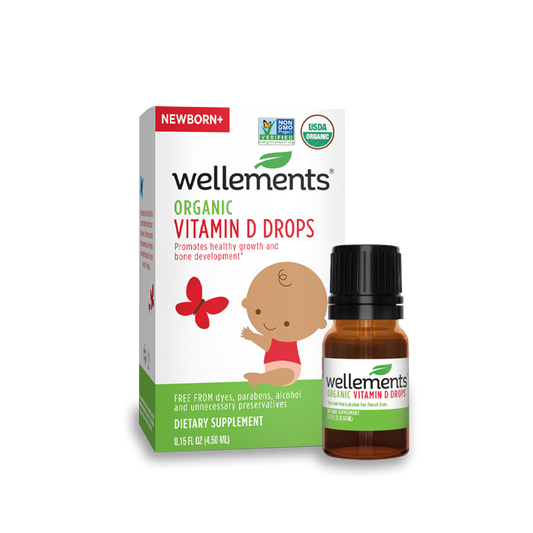Vitamin D: An Age-by-Age Guide
| updated:Share

Who wouldn't want more of the sunshine vitamin? If you're not already in the know about vitamin D, this nutrient plays a critical role in building strong bones. In this guide, find out how much extra vitamin D your child needs for the best possible bone health at every age.
The Benefits of Vitamin D
Vitamin D is most closely associated with strong, healthy bones and teeth. Research also links this nutrient to the health of the brain and overall nervous system, heart, lungs, and immune system. Scientists also continue to learn more about all the body-boosting benefits of vitamin D. Studies suggest that getting enough vitamin D in childhood reduces the risk of chronic illnesses such as type 1 diabetes.

Vitamin D For Infants
Ensuring your baby gets enough vitamin D is trickiest during the newborn and infant stages. Older kids and adults eat foods with this nutrient and spend time in the sun, both important sources of the so-called sunshine vitamin. However, since babies should be shielded from direct rays and eat few solid foods during their first six months, the American Academy of Pediatrics recommends vitamin D supplements for exclusively breastfed little ones.
4.2 /
5.0
(86)
86
total reviews
Vitamin D Drops
Sale price
$11.99
Vitamin D for Children 1-4
After 12 months, spend time in the sun with your child for just 30 minutes in the spring and summer months to generate a healthy dose of vitamin D. The skin can absorb plenty of this nutrient through the sun's rays, even with everything covered but the hands and face. Doctors at the Children's Hospital of Philadelphia recommend letting your child outside for 10 to 15 minutes before applying sunscreen to balance the need for skin protection with the need for this nutrient.
You can also feed toddlers and preschoolers foods with generous amounts of vitamin D. Options to try include kid favorites like egg yolks, fortified cereal, fortified orange juice, and more esoteric options, shiitake mushrooms, sardines, and cod liver oil. Many parents choose to make it easy by continuing a vitamin D supplement even as their little ones graduate to solids.

Vitamin D For School-Aged Children
Even though most children in this age group get enough vitamin D from their diets and the time they spend in the sunshine, some kids should still take supplements. Your child may have a higher risk of a vitamin D deficiency if they:
- Are overweight or obese
- Usually wears long-sleeved clothing with long pants
- Spend most of the time inside
- Has dark skin
- Takes medications that change the way the body absorbs and uses vitamin D, including anticonvulsants and St. John's wort (an over-the-counter supplement often recommended for depression)
- Has celiac disease
Talk to your child's pediatrician to determine whether you should provide vitamin D supplements after age 4.
Risks of Low Vitamin D Levels
Your child's doctor may diagnose low vitamin D with blood levels of less than 20 ng/mL (nanograms per milliliter). Left untreated, a vitamin D deficiency can lead to rickets, a rare disease that causes soft bones, pain, and muscle weakness. It can also compromise your child's growth.
You can prevent issues associated with lack of vitamin D by following these recommendations for daily intake by age:
- Birth to 12 months: 400 IU
- Children 1-13 years: 600 IU
- Teens 14-18 years: 600 IU
If your child doesn't get enough vitamin D from their diet or you have concerns about sun exposure, consider organic vitamin D supplements from Wellements to give your little one the building blocks they need for healthy bones and teeth, not to mention the other benefits of the sunshine vitamin.
Sources:
https://www.chop.edu/news/health-tip/vitamin-d-supplements-what-parents-should-know
https://medlineplus.gov/vitaminddeficiency.html



